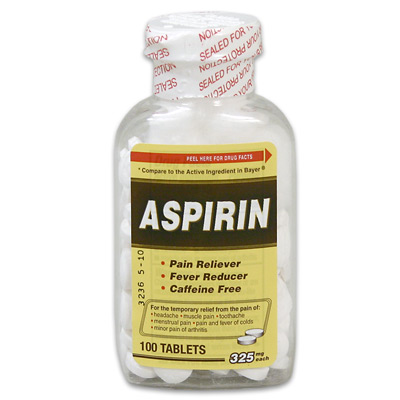Women with type 2 diabetes may be at greater risk of developing yeast infections or have more trouble fighting off bacterial infections. Here’s how to maintain feminine health with the disease.
By Ilene Raymond Rush Medically Reviewed by Bhargavi Patham, MD, PDPoorly controlled blood sugar and the use of certain medications can leave women with diabetes at a greater risk of feminine health problems.Getty Images
Anyone who has experienced a yeast infection knows how unpleasant the condition can be. Abnormal vaginal discharge, itching and burning, painful intercourse and urination, and redness and swelling — any of these common symptoms can put a dent in a woman’s sex life or simply impact her daily comfort level. For women with type 2 diabetes, combating this issue and maintaining feminine health overall can be of particular concern, especially if their blood sugar is poorly controlled.
A Greater Risk of Yeast Infections
“Control of blood sugars is important for the whole body,” says Mache Seibel, MD, a gynecologist and obstetrician at Harvard Medical School in Boston. “But an area that isn’t much talked about is how elevated blood sugars seep into vaginal tissues and set up an environment that’s more favorable for yeast infections.”
Vaginal tissue contains a balance of microorganisms, like yeast and bacteria, Dr. Seibel explains, but excess sugar in the blood can fuel the growth of yeast, potentially leading to an infection.
“Think about baking bread and how yeast thrives much better when you add sugar,” says Susan Renda, CDE, doctor of nursing practice and assistant professor in the department of community–public health at Johns Hopkins University School of Nursing in Baltimore. “I tell patients, ‘You have a nice little balance in your body, but when you throw a cake and cookie party, all the yeast comes to the party and just starts to go nuts.’”
Frequent urination, which can occur when glucose levels are high and the body works to rid itself of excess sugar, can add to the problem by bringing additional sugar found in the urine to the vaginal area. Certain diabetes drugs, such as canagliflozin (Invokana, Invokamet, or Invokamet XR), an SGLT-2 inhibitor, lower blood sugars by excreting glucose in the urine, which can also add to the sugar in the vaginal area and increase the chance of mild yeast infections.
If you experience any signs of a potential yeast infection, call your doctor to confirm the diagnosis and discuss further management.
Warding Off Bacterial Infections
Women with diabetes also tend to be at a greater risk of bacterial vaginosis, a condition that occurs when there is too much of a certain bacteria in the vagina, and can increase the chance of a sexually transmitted disease (STD) developing.
Bacterial infections can produce fevers, chills, and a foul-smelling discharge from the vagina. Antibiotics are required to treat the condition.
“The normal acidic environment of the vagina provides a natural barrier to infection and irritation, since it represses the growth of bad bacteria, which prefer a less acidic environment,” says Seibel. “As long as the good bacteria count is high and the vaginal pH is acidic, bad bacteria have a very slim chance of overgrowing, making the chance of infection low.”
Seibel explains that women with diabetes tend to have a more alkaline, rather than acidic, pH, but controlling your blood sugar can help increase your acidity, thereby warding off bacterial infections. Seibel says the normal vaginal pH is about 3.5 to 4.5. Lower pH readings are considered acidic, while those that are greater than 4.5 are considered alkaline.
Diabetes can also prevent women’s bodies from healing from bacterial infections.
“When people have blood sugars over 200 mg/dL (milligrams per deciliter), they don’t heal as well, and the immune system doesn’t act the way it should against bacteria,” says Dr. Renda. For people with diabetes, the Joslin Diabetes Center, a clinic and research and education center in Boston, recommends a fasting plasma blood glucose range of between 70 and 130 mg/dL, a plasma blood glucose range of less than 180 mg/dL after meals, and a plasma glucose range of between 90 and 150 mg/dL at bedtime.
Along with problems fighting such infections, women with diabetes who get frequent yeast infections may mistakenly self-diagnose their condition and end up treating a bacterial problem with over-the-counter yeast medication rather than antibiotics.
“It’s a good idea for women with diabetes to treat themselves more carefully than the general population when it comes to vaginal health,” says Seibel. “If something doesn’t seem normal compared with when they’re feeling healthy, they should consult with a medical professional.”
Maintaining Feminine Health With Diabetes
If you have diabetes, keeping your blood sugar in check is the best way to avoid vaginal infections. To further reduce your risk of complications related to feminine health, follow these tips:
Eat yogurt with live cultures, or take tablets of Lactobacillus acidophilus, a bacteria naturally found in the vagina, to promote vaginal acidity and reduce the risk of yeast infections.
Practice good hygiene, keeping the genital area cool and dry. Warm and moist areas are more susceptible to yeast infections.
Avoid douching, as it removes healthy bacteria lining the vagina that protect against infection.
Stay well hydrated. Drinking more water can keep the vagina hydrated and the pH in balance.
Use condoms to avoid catching or spreading other infections.
Wear cotton underwear, and avoid tight-fitting or scented garments that can cause irritation or promote moisture in the vaginal area.
Avoid wearing wet bathing suits or used workout gear for longer than necessary.
CLIMATE CRISIS REPORT
-
*We now have the clearest picture yet of how different the world is today
as a result of human-driven climate change. The most
comprehensive report to da...
2 years ago































